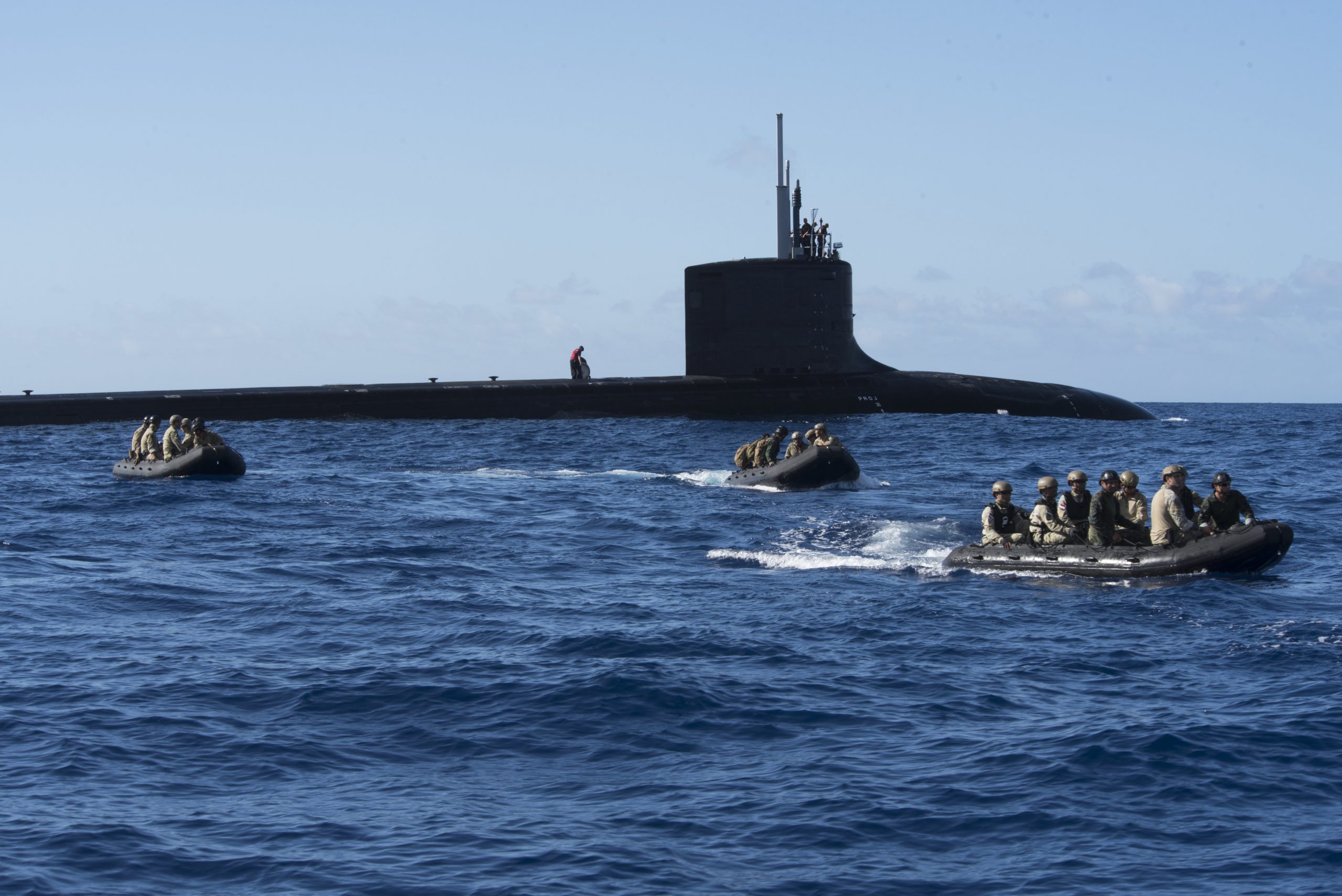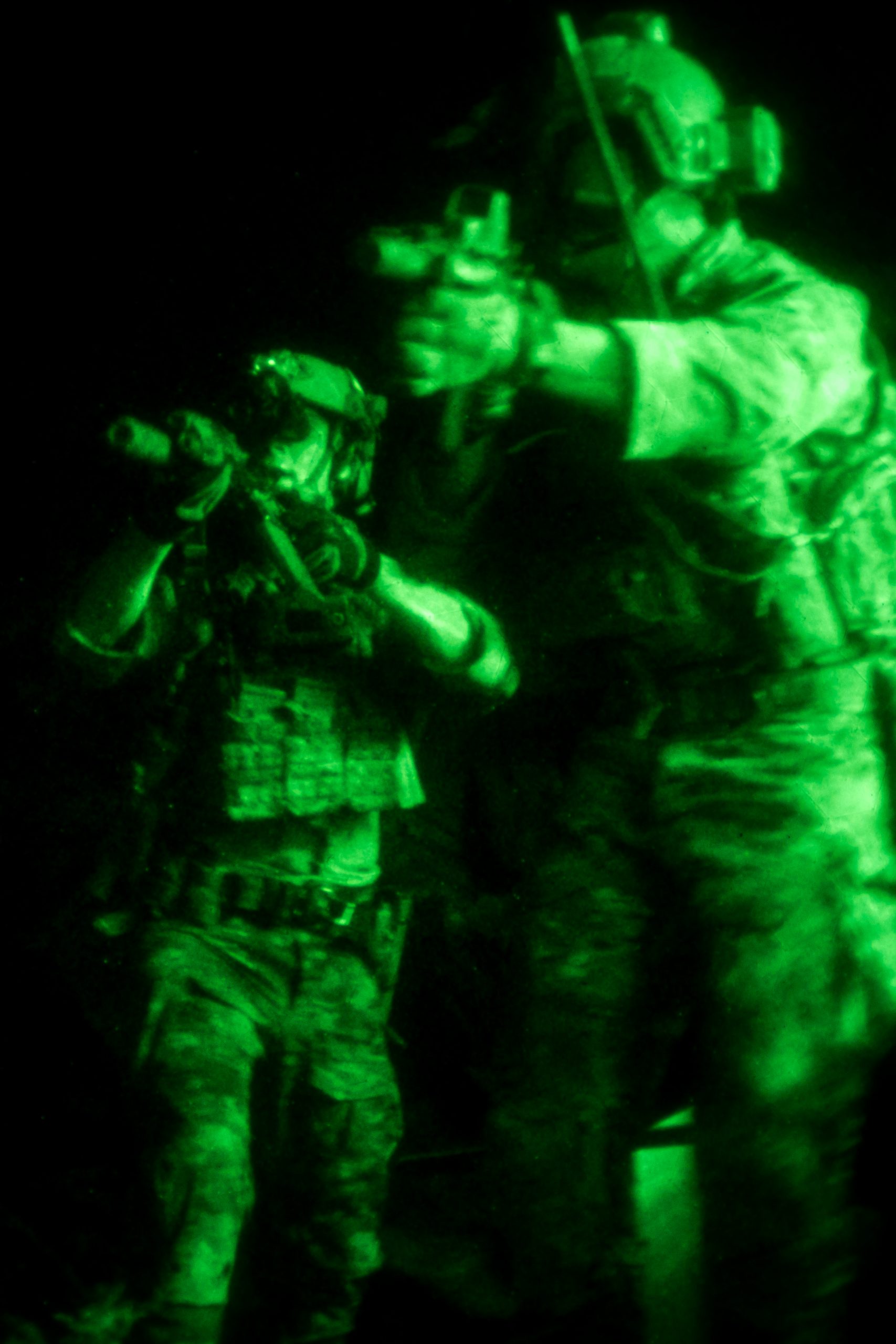
The return of Great Power competition means that US SOCPAC is more than ever seeking joint training opportunities with regional special forces.
Special Operations Forces (SOF) offer the US Department of Defense (DoD) a force-multiplying and flexible solution as it pivots towards countering aggression below the threshold of full conflict from the likes of the People’s Republic of China (PRC) and the Russian Federation.
As a unifying special operations command in the Indo-Pacific, the US Special Operations Command Pacific (SOCPAC) has become a critical tool for the US DoD and its Indo-Pacific Command (INDOPACOM) as it seeks to sustain relationships with dozens of SOF entities throughout the region, and counter PRC and Russian Federation activities.
Addressing the AFCEA TechNet Indo-Pacific Conference in Honolulu, Hawaii on 1 March, the US INDOPACOM commander, Admiral Phil Davidson described how SOF comprised an important element of the Joint Force as it seeks to shape the region.

Describing ongoing efforts to overcome shortfalls in the face of this “Great Power Competition”, Davidson explained how China remains “emboldened to take action to supplant the established rules-based international order”.
The pivot towards operations associated with the Great Power Competition was first officially discussed by SOCPAC and its regional parters at the Transregional Resistance Working Group (TRWG) in Monterey, California in February 2020.
The event, entitled The Role of SOF and Great Power Competition – Comparative Dialogue of Russia and China, featured the participation of SOF representatives from across the region, including Canada, Estonia, France, Georgia, Japan, Mongolia, New Zealand, South Korea, Sweden, Taiwan, Ukraine, the United Kingdom and the US.
SOCPAC, which is based out of Camp Smith on the Hawaiian island of O’ahu, is ideally suited to supporting the INDOPACOM’s main effort which is to “provide combat credible deterrence to protect free and open access to trade routes through the air, sea, land, space, and cyberspace”.
“To effectively deter, we need to arm the Joint Force with the proper capabilities, capacities, authorities, and indeed the doctrine to support rapid force employment, accurate offensive power, and effective defences,” Davidson explained at the AFCEA event.
Supported by SOF elements from the Army’s 1st Special Forces Group, based at Torii Garrison; the US Air Force’s (USAF’s) 353rd Special Operations Group, based at Yokota Air Base; and the US Navy’s Special Warfare Unit One, based in Guam; SOCPAC is tasked with strengthening ties with allies and partners throughout the region.
“Our constellation of allies and partners is the backbone of the free and open international order, providing a powerful force to counter malign activity and aggression. We are seeking every opportunity to increase the frequency and intensity of our combined operations, exercises, and training with our allies and partners,” Davidson explained.
“Even in the face of the COVID pandemic, we are increasing our interoperability and compatibility across the region to enhance our capabilities and improve our coordination for competition. This manifests itself in information sharing agreements, foreign military sales, expanded military cooperation, and international security dialogues – such as TechNet – designed to address our mutual security concerns alongside our closest allies and partners.”
COVID disrupts training
SOCPAC is also able to support INDOPACOM’s final focus area which comprises “exercises, experimentation, and innovation” according to Davidson.
“The most effective way to combat the security challenges and demonstrate our resolve in today’s dynamic operating environment is through a continuous campaign of joint experimentation and high-fidelity, multi-domain training,” he explained.
The ongoing COVID-19 pandemic, however, has restricted efforts in terms of multi-lateral training opportunities in the Indo-Pacific. In May 2020 the Republic of Korea and SOCPAC gave consideration to cancelling all multi-lateral training events over the course of the year – annual events which are conducted both in the Republic of Korea as well as the continental US. The decision was confirmed in August 2020 and followed the cancellation of the Rim of the Pacific (RIMPAC) exercise in June/July 2020.
The biennial exercise was once again expected to include a SOF-specific training programme, organised by SOCPAC and led by the Okinawa-based 1st Special Forces Group of the US Army.
Force elements expected to participate include maritime SOF entities from Brazil, Chile, India, Japan, Philippines, Peru and South Korea, with training sites including Joint Base Pearl Harbor Hickam, Marine Corps Base Kaneohe Bay, and Bellows Air Force Base.
The exercise aimed to focus on the “command and control of SOF forces within RIMPAC; multinational interoperability training; direct action raids; and maritime/dive operations”, SOCPAC explained to Asian Military Review.
Training serials were scheduled to feature Helicopter Assault Force operations; Fast Rope Insertion Extraction from rotary wing platforms; maritime Close Quarter Combat; submarine operations; small boat operations; military freefall, and combat diving.
Example of some recent multi-lateral exercises which have taken place across the Indo-Pacific since the start of the pandemic include a joint training package organised by SOCPAC and featuring Japanese SOF.
Conducted in November 2020 across the Kanto Plain, Japan, the exercise featured the USAF’s 353rd Special Operations Group and Japan’s Special Operations Group (SOG) who trained in special operations mission planning; parachute insertion of personnel and cargo.
Exercise Keen Sword also provided the opportunity for the SOG to work with the USAF’s 320th Special Tactics Squadron, conducting a series of joint Combat Search and Rescue (CSAR) training serials at the Combined Arms Training Centre Camp Fuji.
SOG operators were also able to practise fast rope insertion and hoist training from USAF Bell Boeing CV-22 Osprey tilt-rotors- a capability which has just entered service with the Japanese Self Defence Force (JSDF) and one which provides the SOG and the navy’s Special Boarding Unit (SBU) with a crucial tactical insertion/extraction and resupply capability.
Just a month earlier, Japan’s SOG also participated in a joint training package aimed at practising an airborne assault on Ryukyu Island.
As SOCPAC exercise officials described to Asian Military Review, the exercise was designed to “develop and refine” tactics, techniques and procedures in addition to increasing tactical planning, coordination and interoperability.
SOF operators from the US and Japan inserted onto the island by high altitude low opening parachutes in addition to UH-60L Black Hawk helicopters.
“The ongoing tension around North Korea’s nuclear program has added an additional layer of importance to the annual exercise,” sources added.
Another nation state currently under threat in the age of GPC is the Republic of China or Taiwan which continues to face invasion by the People’s Republic of China (ROC).
Illustrating the threat, the PRC’s People’s Liberation Army conducted a mock invasion of an island, widely accepted by the world’s intelligence community to represent the ROC.
The joint assault, which was conducted at night, feature special operations forces, paratroopers and unmanned aerial vehicles during a ‘three dimensional’ operation, according to Chinese media sources.
In June 2020, the US Army’s 1st SFG published a video on its official Facebook site which featured joint training serials with the ROC’s Aviation and Special Forces Command (ASFC).
The serial illustrated US and ROC SOF operators executing a ground assault exercise serial at an undisclosed location. Following the assault, SOF operators were airlifted by Black Hawk helicopters.
SOCPAC is also understood to be advising the AFSC in regards to the foundation of a Joint Special Operations Command which would be capable of bringing together SOF components from the army, navy and air force in order to more successfully execute joint, multi-domain special operations.
Sources described to AMR how such a move would improve the command and control of ROC SOF, particularly in terms of optimism operational effectiveness in asymmetric warfare.
First suggested in the third quarter of 2020, the possibility of a JSOC continues to be considered by the National Security Council with the support of the armed forces. No official indication has been in regards to when the JSOC might be established and when it might achieve an initial operating capability.
Elsewhere, SOCPAC continues to monitor the ongoing security situation along the PRC’s border with India.
On 16 June 2020, there was a fatal ‘skirmish’ between the Indian Army and People’s Liberation Army (PLA) in Ladakh on the Line of Actual Control (LOAC).
In June 2020 PLA SOF supported a joint training programme with the Tibet Military Command following a fatal skirmish between Chinese and Indian personnel along the border on 16 June 2020 in Ladakh.
Elsewhere, SOCPAC is building up relationships with Nepal which shares a land border with the PRC. Between September and October 2020, SOF operators from the army’s 1st SFG trained at the High Altitude and Mountain Warfare School (HAMWS) which belongs to the Nepali Army.
Also featuring SOF representation from Pakistan and Bangladesh, training focused on the execution of offensive operations in high altitude areas and mountainous terrain.
“Recent border skirmishes between India and China demonstrate the strategic importance of these areas. As Great Power competitors test historical borders, the ability to incur costs on forces encroaching through high altitude and mountainous regions remains a principal capability in the defence of sovereignty,” revealed a SOCOM source.
Personnel conducted a six-week programme which including “ascending and descending techniques, survival and rescue techniques, use of special equipment and tactics concerning cliff assault in both rock and alpine areas”. The exercise culminated in the ascent of the 20,020ft Thorang Peak mountain.
Meanwhile, SOCPAC continues to build up relations with The Maldives following an exchange with the Maldives National Defense Force (MNDF) in January 2021.
Focused on communications and combat medicine, the exercise involved operators from the 1st SFG and the MNDF’s Special Forces although all participating personnel were forced to quarantine ahead of the programme. Tactical communications focused on the extension of line of sight networks through relays; while medical training focused on tactical combat casualty care and evacuation.
SOCPAC’s training with the MNDF falls in line with the Framework for U.S. Department of Defense-Maldives Ministry of Defense and Security Relationship which was signed in September 2020. The agreement outlines future “engagement and cooperation in support of maintaining peace and security in the Indian Ocean”.
Other regular joint training exercises organised across the Indo-Pacific by SOCPAC include Cobra Gold and Balakatan.
Cobra Gold is conducted with the Royal Thai Armed Forces every year with a focus on special operations in addition to conventional force operations. The exercise, which is conducted in Thailand, features army, navy and air force teams with a focus on counter-insurgency and counter-terrorism mission sets.

Exercise Balikatan last took place between 12-23 April 2021 in the Philippines and again featuring a heavy emphasis on special operations. SOCPAC components conduct direct action, special reconnaissance and humanitarian aid/disaster relief training serials.
The exercise also demonstrates “cooperation and interoperability between the Philippines and the US, consistent with the Mutual Defense Treaty and Visiting Forces Agreement. This event highlights the two militaries continued commitment to train and share information to improve their ability to coordinate a multilateral response to crisis,” SOCPAC officials shared.
Conclusion
Finally, SOCPAC is well positioned to support innovation injections across the Indo-Pacific, particularly in terms of sub-surface capabilities. Examples include USSOCOM’s Shallow Water Combat Submersible (SWCS) platform, also referred to as the Mk11 Swimmer Delivery Vehicle, designed for the clandestine insertion of combat divers to avoid detection by enemy forces.

SOCPAC and Naval Special Warfare continue to test initial delivers of the Teledyne Brown Engineering SWCS out of Joint Base Pearl Harbor Hickam on the island of Oahu. However, due to ITAR restrictions, partner forces across the wider Indo-Pacific (with the exception of five eyes partners including Australia and New Zealand) are unlikely to benefit from any foreign military sale of the technology.
by Andrew White











